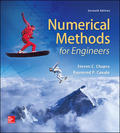
Use minors to expand the determinant of
Want to see the full answer?
Check out a sample textbook solution
Chapter 27 Solutions
EBK NUMERICAL METHODS FOR ENGINEERS
Additional Engineering Textbook Solutions
Math in Our World
Pathways To Math Literacy (looseleaf)
Precalculus: Mathematics for Calculus (Standalone Book)
APPLIED STAT.IN BUS.+ECONOMICS
Precalculus
Elementary Statistics: A Step By Step Approach
- Can you please explain how to go about completing this table in simplest terms please. Thank you fx f(-1/3x) (2,4) (-3,6)arrow_forwardA population growing with harvesting will behave according to the differential equation dy dt = 0.06y(1- У с 1800 y(0) = yo Find the value for c for which there will be only one equilibrium solution to the differential equation C = If c is less than the value found above, there will be equilibria. If c is greater than the value found above, there will be equilibria.arrow_forwardmicrosoft excel iclude fomulasarrow_forward
- f(x) 1/3 f(2(x-2))+4 (2,4) (-3,6) Please explain in step by step simple terms how to answer this questionarrow_forwardPlease help step by step simple terms how to answer this question Given the parent function f(x)=1/x, determine the equation of the new function after the following transformations reflection over x and y axis vertical stretch by a factor of 6 horizontal compression by a factor of 1/3 translated 4 spaces left , 9 spaces up Clearly state the domain and rangearrow_forwardGiven f(x) = 6x - 7, determine f-1(10) Please explain step by step how to answer this question in simple termsarrow_forward
- pls helparrow_forwardFind the general solution of the differential equation: y'-3y = te¹t 4t Use lower case c for the constant in your answer.arrow_forwardUse the Cauchy Riemann equations in polar form to show where it is holomorphic. Then use the formula f'(z)=e^{-i theta}[ur+ivr] to show that the derivative is f'(z)=i/z * f(z)arrow_forward
 Linear Algebra: A Modern IntroductionAlgebraISBN:9781285463247Author:David PoolePublisher:Cengage Learning
Linear Algebra: A Modern IntroductionAlgebraISBN:9781285463247Author:David PoolePublisher:Cengage Learning Algebra for College StudentsAlgebraISBN:9781285195780Author:Jerome E. Kaufmann, Karen L. SchwittersPublisher:Cengage Learning
Algebra for College StudentsAlgebraISBN:9781285195780Author:Jerome E. Kaufmann, Karen L. SchwittersPublisher:Cengage Learning College Algebra (MindTap Course List)AlgebraISBN:9781305652231Author:R. David Gustafson, Jeff HughesPublisher:Cengage Learning
College Algebra (MindTap Course List)AlgebraISBN:9781305652231Author:R. David Gustafson, Jeff HughesPublisher:Cengage Learning
 Elementary Linear Algebra (MindTap Course List)AlgebraISBN:9781305658004Author:Ron LarsonPublisher:Cengage Learning
Elementary Linear Algebra (MindTap Course List)AlgebraISBN:9781305658004Author:Ron LarsonPublisher:Cengage Learning





